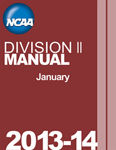
|
|
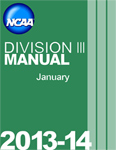
|
|
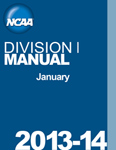
|
|
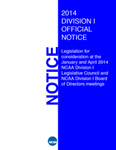
|
This publication contains all legislation for initial consideration by the NCAA Division I Legislative Council at its January 15-16, 2014, meeting and for possible consideration by the NCAA Division I Board of Directors at its January 18, 2014, meeting. All of the proposals in this publication were properly sponsored by conferences, cabinets, the Division I Legislative Council or Board of Directors.
To assist the membership in communicating positions through conference offices and conference Legislative Council representatives, the proposals appear in topical groups.
|
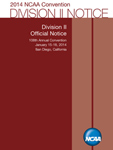
|
Division II Official Notice
108th Annual Convention, January 15-18, 2014, San Diego, California
This Official Notice contains legislation for consideration at the Division II business session of the 2014 Convention, including amendments-to-amendments. It also contains the necessary information concerning the accreditation of delegates, voting procedures and other Convention policies. We encourage each member to review the information related to the activities in which you will be involved before attending the Convention. It is particularly important that each Division II delegate bring a copy of the Official Notice to the Convention. The Official Notice will be the only publication containing all Division II Convention legislation. |
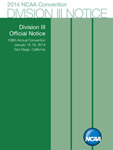
|
Division III Official Notice 108th Annual Convention, January 15-18, 2014, San Diego, California This Official Notice contains legislation for consideration at the Division III business session of the 2014 Convention, including amendments-to amendments. It also contains the necessary information concerning the accreditation of delegates, voting procedures and other Convention policies. We encourage each member to review the information related to the activities in which you will be involved before attending the Convention. It is particularly important that each Division III delegate bring a copy of the Official Notice to the Convention. The Official Notice will be the only publication containing all Division III Convention legislation. |
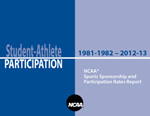
|
|
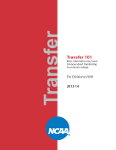
|
The purpose of this guide is to help you, your family, athletics administrators and others understand NCAA transfer rules.
|
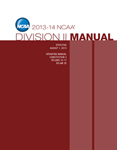
|
|
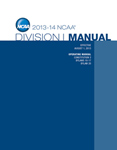
|
|
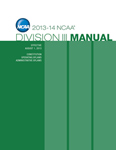
|
|
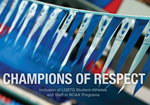
|
This resource was commissioned by the LGBTQ Subcommittee of the NCAA association-wide Committee on Women’s Athletics and the Minority Opportunities and Interests Committee in 2012. The subcommittee’s charge is to provide leadership and advocacy, raising awareness of and providing resources to address issues related to equitable opportunities, fair treatment and respect for LGBTQ student-athletes, coaches, administrators and all others associated with intercollegiate athletics.
|
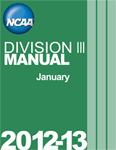
|
|
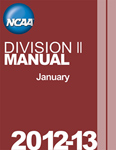
|
|
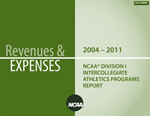
|
Published October 2012. This report represents the 2012 edition of Revenues and Expenses of NCAA Division I Intercollegiate Athletics Programs. Although editions prior to 1989 were conducted, independently of the NCAA by Professor Mitch Raiborn of Bradley University, editions subsequent to that date have been joint efforts of the NCAA research staff and Daniel L. Fulks. This edition includes data for the fiscal years 2004 through 2011.
|
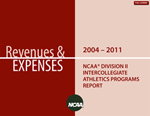
|
Published October 2012. This report provides summary information concerning revenues and expenses of NCAA Division II athletics programs for the fiscal years 2004 through 2011. It is the result of surveys conducted during the fall of each of those years. Although similar studies have been conducted for the NCAA since 1969, significant changes in data collection and reporting render those reports non-comparable to those of 2004 and beyond.
Objectives. The primary objective of the 2012 edition of the report is to update the information provided in previous reports concerning financial aspects of intercollegiate athletics programs. A second objective is to provide an analysis of revenue and expense trends for Division II athletics programs, with two groupings - one for institutions with football and one for those without. A third objective is to provide data relevant to gender issues.
|
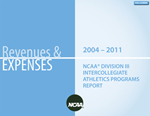
|
Published October 2012. This report provides summary information concerning revenues and expenses of NCAA Division III athletics programs for the fi scal years 2004 through 2011. It is the result of data collected in the fall of each of those years. Although similar studies have been conducted for the NCAA since 1969, signifi cant changes in data collection and reporting render previous reports non-comparable to those of 2004 and beyond.
Objectives. The primary objective of the 2012 edition of the report is to update the information provided in previous reports concerning financial aspects of intercollegiate athletics programs. A second objective is to provide an analysis of expense trends of NCAA Division III athletics programs and its two defi ned subgroups – schools with football and those without. A third objective is to provide data relevant to gender issues.
|
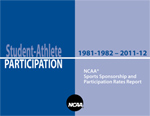
|
The NCAA compiled the following statistical information regarding participation in intercollegiate athletics at its member institutions. This information provides a general view of historical trends in participation and sponsorship by gender, sport and division. Much of this information has been collected in detail since the 1981-82 academic year; however, the added teams, dropped teams and net change data are only available since 1988-89. Statistics from the 1956-57 through the 1981-82 academic years are included, but are only available at five-year intervals and include recreation programs. Therefore, they are not directly comparable to the statistics for the years that followed.
|
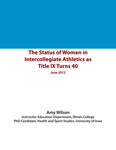
|
The NCAA association-wide Committee on Women’s Athletics commissioned this report to bring multiple research findings illustrating the status of women as student-athletes, coaches and administrators in NCAA athletics into one document.
The mission of the NCAA Committee on Women’s Athletics is to provide leadership and assistance to the association in its efforts to provide equitable opportunities, fair treatment and respect for all women in all aspects of intercollegiate athletics. Toward these ends, the committee shall seek to expand and promote opportunities for female student-athletes, administrators and coaches. The committee shall promote governance, administration and conduct of intercollegiate athletics at the institutional, conference and national levels that are inclusive, fair and accessible to women. The committee shall develop programs and resources, which can be of practical use to the association in its effort to achieve these ends.
The NCAA has extensive resources related to gender equity and Title IX. For more information, NCAA members can access those resources at www.ncaa.org/gender_equity and www.ncaa.org/title_ix. |
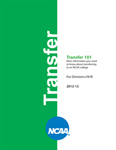
|
Basic information you need to know about transferring to an NCAA college For Divisions I/II/III - 2012-13.
|